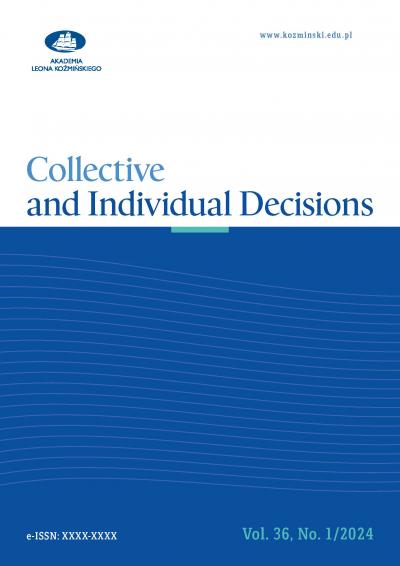Wpływ kolejności prezentacji cen i formy płatności na wybory konsumenckie
Anna Hełka
SWPS Uniwersytet Humanistycznospołeczny
Ewelina Ślimak
SWPS Uniwersytet Humanistycznospołeczny
06/2016 (25) Decyzje
DOI 10.7206/DEC.1733-0092.70








